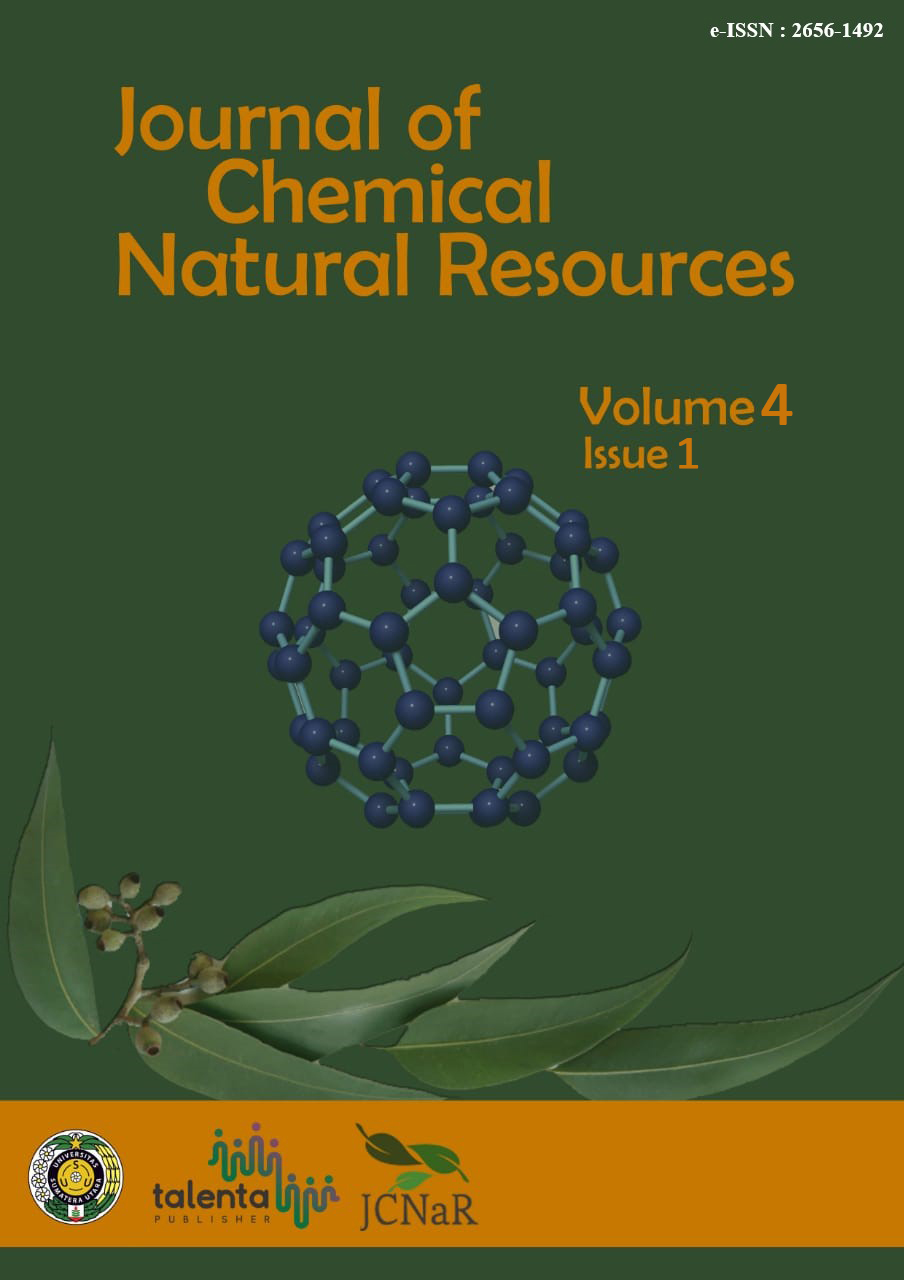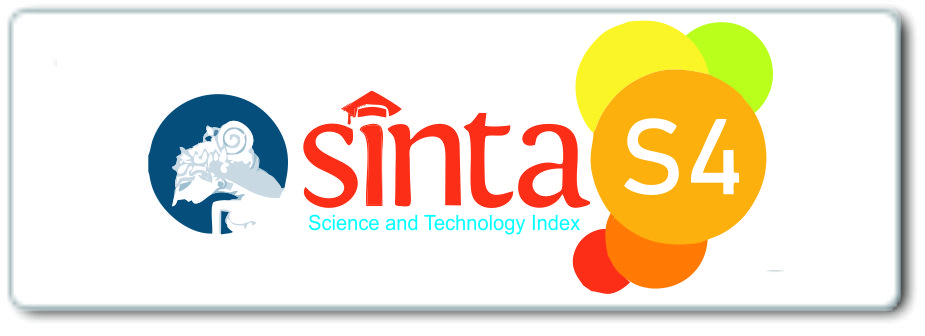Synthesis of Sulfated Chitosan Through Sulfation Reaction of Chitosan with Chlorosulfonic Acid in N, N-Dimethylformamide, and Antibacterial Activity Test
DOI:
https://doi.org/10.32734/jcnar.v4i1.9353Keywords:
Antimicrobial Index, Chitosan, Sulfation, Sulfated ChitosanAbstract
Sulfated chitosan has been successfully synthesized through sulfation reaction between chitosan and chlorosulfonic acid using catalyst and N, N-Dimethylformamide (DMF) solvent. The first step was sulfation of chitosan with 4; 4.5; 5 mL of HClSO3. The formation of sulfated chitosan was supported by an increased solubility in water and the appearance of peaks at 1111 cm-1, which indicated the C-O-S group. Sulfated chitosan that has been produced, has a degree of sulfation of 5.6041%; 6.0045%; 6.8051%. Sulfated chitosan shows moderate antibacterial activity and a wide spectrum of antibacterial properties against Escherichia coli and Staphylococcus aureus bacterias. The increase in the degree of sulfation was proportional to the increase in antimicrobial activity of both bacteria. The highest antibacterial activity based on inhibitory zone diameter was 10 mm for sulfated chitosan that has been produced from 1 g of chitosan with 5 mL of HClSO3 with a degree of sulfation was 6.8051%.
Downloads
References
Alimuniar A, Zainuddin, 1997. An Economical Technique for Producing Chitosan, Advances integration chitin and chitosan, London, Elsevier.
Ayu ND, Recita I, Sandy C, 2014. Efektifitas Ekstrak Daun Jambu Mete (Anacardium occidentale L) Terhadap pertumbuhan Aggregatibacter Actinomycetemcomitans pada Gingivitis-In Vitro. ODONTO Dental Journal I. 1 (1) : 44-48.
Davis WW, Stout TR, 1971. Disc Plate Method of Microbiological Assay. Journal of microbiology 22: 659-665.
Dewi AS dan Fawzya YN. 2006. Chitosan oligosaccharide: its production and pootinence as an antibacterial. Squalene 1 (1): 26-33.
Dhuhita A, Arti DK. 2010. Karakterisasi dan uji Kinerja SPEEK, cSMM, dan Nafion untuk aplikasi direct methanol fuell cell (DMFC) [skripsi]. Semarang (ID) ; Diponegoro University.
Ginting NH, 2004. Synthesis of chitosan sulfate through sulfonation reaction of chitosan with chlorosulfonic acid in solvent N, N-dimethylformamide [thesis]. Field: FMIPA USU
Han Z, Zeng Y, Zhang M, Zhang Y, Zhang L, 2015. Monosaccharide Compositions of Sulfated Chitosans Obtained by Analysis of Nitrous Acid Degraded and Pyrazolone-labeled Products. China: Elsevier.
Mat BZ, 1995. Chitin and Chitosan, University kebangsaan Malaysia.
Mohamed NA, Sabaa MW, El-Ghandour AH, 2013. Quaternized N-substituted carboxymethyl chitosan derivatives as antimicrobial agents, Egypt: Elsevier.
Seedevi P, Moovendhan M, Vairamani S, Shanmugam A, 2017. Evaluation of Antioxidant Activities and Chemical Analysis of Sulfated Chitosan from Sepia prashadi. India: Elsevier.
Sun Z, Shi C, Wang X, Fang Q, Huang J, 2016. Synthesis, Characterization, and Antimicrobial Activities of Sulfonated Chitosan. China: Elsevier.
Vino AB, Ramasamy P, Shanmugam V, and Shanmugam A, 2012. Extraction, Characterization and In Vitro Antioxidative Potential of Chitosan and Sulfated Chitosan from Cuttlebone of Sepia aculeata Orbigny, 1848. India: Elsevier.
Vongchan P, Sajomsang W, Kasinrerk W, Subyen D, and Kongtaweleri P, 2002. Anticoagulant Activities of the Chitosan Polysulfate Synthesized from Marine Crab Shell by Semi-heterogenous Conditions. Thailand: Elsevier.
Downloads
Published
Issue
Section
License
Copyright (c) 2022 Journal of Chemical Natural Resources

This work is licensed under a Creative Commons Attribution-ShareAlike 4.0 International License.















